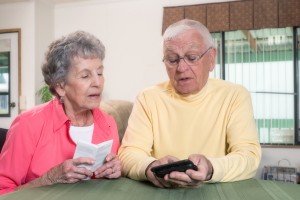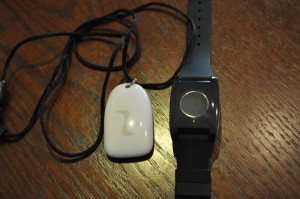Seniors Embracing Technology
 Although the learning curve can be challenging and seniors may be late to adopt new technology, more older people are now embracing the digital age. According to Pew Research Center surveys, a clear majority of senior citizens (at least 59%) are using the internet today.
Although the learning curve can be challenging and seniors may be late to adopt new technology, more older people are now embracing the digital age. According to Pew Research Center surveys, a clear majority of senior citizens (at least 59%) are using the internet today.
As discovered in another Pew Research study, there are two separate groups of older Americans as related to technology and internet use. The first group, which leans toward younger, more affluent or more highly educated seniors, has substantial technology and a positive view of online platforms. The second group, which tends to be older and less affluent, with health or disability challenges, is mainly physically and psychologically disconnected from digital tools and services.
Six in every 10 seniors now go online. Younger, higher income, better-educated seniors are now using the internet at a rate that approaches or exceeds the general population. Studies revealed the following:
- 90% of seniors with an annual household income of $75,000 or more go online.
- 87% of seniors with a college degree go online.
- 40% of seniors who have not attended college go online.
Technology Learning Curve for Seniors
Most older adults admit they need assistance using new digital devices. Based on study surveys, only 18% said they would feel comfortable learning to use a new smartphone or a tablet on their own, while 77% admitted they would need someone to walk them through it. Among seniors who are unfamiliar with social networking sites, 56% said they would need help learning to use these sites to connect with friends and family.
Older Adults Using Technology in Their Daily Lives
Despite the learning curve, once they adopt technology, senior citizens embrace it. Most older internet users go online daily. These seniors have positive attitudes about internet use. A full 79% of older adults who use the internet agree that other seniors who are not online are at a disadvantage without the information it provides, while 94% agree that internet use makes finding information far easier.
Seniors tend to use different devices than younger adults. An identical 18% of older adults own smartphones, tablets, and e-book readers. Among the general population, more than half of Americans own a smartphone. Most senior citizens (77%) have a cell phone of some kind.
Advancing Technology in Home Alert Systems
As in most aspects of life in the 21st Century, home alert systems technology has advanced significantly in recent years. Older systems were landline-based and only effective while the user was within the home. Modern home alert systems offer cellular options with mobile GPS to travel with you, so you can get help in an emergency with the push of a button on a pendant or bracelet, no matter where you are. Our medical alert comparison provides an overview of various home alert systems and the scope of features these brands offer.



